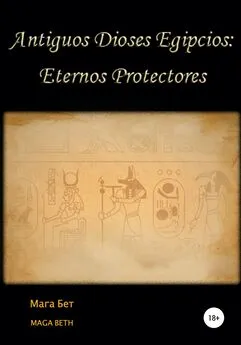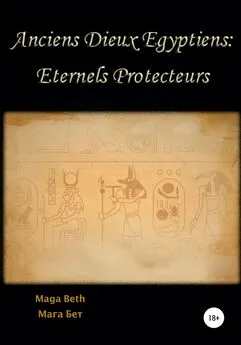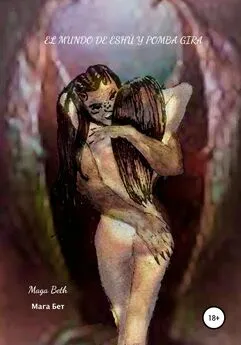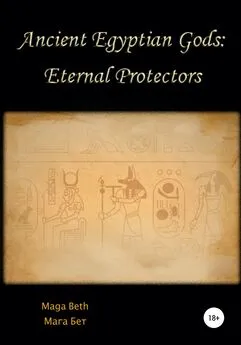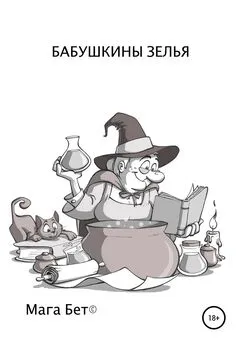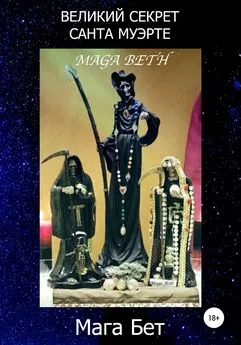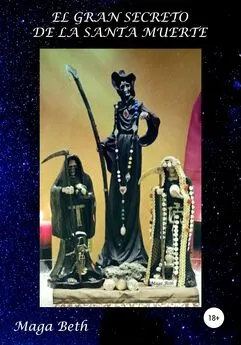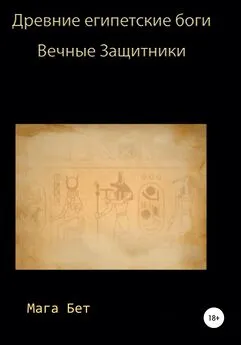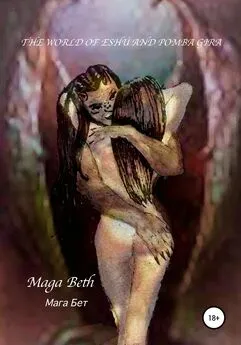Maribel Maga Beth - The Great Secret of Holy Death
- Название:The Great Secret of Holy Death
- Автор:
- Жанр:
- Издательство:неизвестно
- Год:2020
- ISBN:978-5-532-05059-4
- Рейтинг:
- Избранное:Добавить в избранное
-
Отзывы:
-
Ваша оценка:
Maribel Maga Beth - The Great Secret of Holy Death краткое содержание
The Great Secret of Holy Death - читать онлайн бесплатно ознакомительный отрывок
Интервал:
Закладка:
Biography
María Isabel Pedrera Pérez, better known as MAGA BETH, was born in Barcelona on February 9, 1970.
With an inherited profession, her grandmother and great grandmother introduced her in the world of High Magic; she showed, at an early age, a preference towards esotericism.
María Isabel attended basic and high school education and completed higher education with a diploma in Infant Education and Childcare, specialising her studies with the following courses:
– Educator for people with learning difficulties – Autism.
– Special needs – Dyslexia.
– Stimulation and development in education with disabilities.
– Psychopathic disorders in childhood.
– Speech Therapy.
– The teacher in school failure.
– Music therapy.
– Movement and play in the teaching practice.
She combined both studies and also specialised in parapsychology, hypnosis, occultism and astrology; and completed a Master in Quality Control and Environment.
As a good Aquarius, her restless soul led her to continue gaining experience but this time in the natural world, and earned a diploma in Naturopathy, Bach Flowers Remedies, Schüssler Salts, Dietetics and Nutrition, Lymphatic Drainage, Reflexology and Chiromassage.
María Isabel is the author of several books:
– El mágico mundo de las pirámides – Piramidología práctica y esotérica.
– Runas, símbolos mágicos.
– Diccionario de santería.
– Eshú y Pomba Gira, más allá del bien y del mal.
– El Mundo de Eshú y Pomba Gira.
– My Granny’s Potions
Throughout these years, María Isabel has collaborated in several radio programmes and esoteric fairs, has given lectures and conferences, and many Tarot, Runes and High Magic courses; and also participated in the First Congress of Mediums held in Spain.
Currently, she continues working in different fields spreading her knowledge.
Contact:
Youtube
Web
Dedication
When I discovered Santa Muerte (the Holy Death) I was in a difficult moment, I had doubts and a lack of faith. This book is the result of rediscovering myself and seeing the great treasure I have with my friends, who encouraged me to write about Santa Muerte so that people could know her in depth.
I would especially like to thank those who have translated the book so it could be read in other languages.
Also, to my family, which are those who I love and I have chosen to be in my life, those who support me and make me laugh… and live, thank you all.
Maga Beth
Introduction
What is Santa Muerte (the Holy Death)? Why are we afraid of her? Santa Muerte is the practice of a religion that originates in Mexico in which the dead are worshipped. This practice has spread to other parts of the world. It is another way of understanding faith and religion. Unknown to many and feared by others, many lies have been said about Santa Muerte and her cult. It is an ancient religion which has been passed down from parents to children.
This book aims to inform about Santa Muerte so that we lose our fear, we understand her, and we know her: the great secret and misunderstanding. We only cease fearing something when it is no longer unknown. Maga Beth with her vast experience in the esoteric world, in different religions and also in Santa Muerte, explains the cult in detail so that the reader gets to know it and demystifies all the dark and negative things that have been unfairly said about it; since every day Santa Muerte has more followers.
This work is a guide that can be used by anyone who wants to make a request, a ritual, or say a prayer, a novena prayer, for love, health, work, money, economy, family, protection, etc. As the reader will see, the ingredients recommended are simple and can be easily found in any part of the world; but, the author also provides a very simple and easy guide on how to make the ingredients that cannot be found yourself. Apart from the history and cult of Santa Muerte, this book also includes an extensive and specific compilation for every topic you may need: love, money, work, health, family, protection, etc. providing the reader with a lot of rituals, works, prayers, novena prayers, etc. for each topic.
This is another book by Maga Beth, unpublished in its sector, that will certainly leave no one indifferent.
Chapter 1 – History

The devotion and cult to La Santa Muerte (the Holy Death) is very ancient and her image has become very familiar in Mexico (where it originates) and in other countries. Many countries are debating the origin of this cult, from Mexico to Cuba, and also some African spiritualist temples (because in Africa there is a very similar, revered image called Oya). However, the truth is that nobody really knows where the belief comes from.
The Holy Death can be found on altars in the street, in shops (sometimes as merchandise, sometimes as a testimony of the trader’s faith), and in houses; along with images of other Catholic saints such as the Virgin of Guadalupe and others, which until recently were the only public manifestations of Mexican popular religiosity.
Birth and death are part of the human life cycle. We are not aware of our birth because we are babies, but the reality of adulthood makes the awareness of death a priority.
In the 1960s, the Holy Death became very popular after a villager saw her image drawn on the walls of his wooden hut at a place in Catemaco (Veracruz). He asked the priest of the village to verify the image and canonize it, but he refused. Then, the villagers decided to spread the apparition of the Holy Death from person to person, without having a place to venerate her.
In Mexico, the Aztec civilisation recognised the human life cycle which was represented by two deities: Mictlantecuhtli and Mictecacihuatl, the Lord and the Lady of Mictlan, the place where common dead went after a long and difficult journey. The temple was located in the ceremonial centre of the ancient city of Mexico-Tenochtitlan. Its name was Tlalxico, which means “navel of the earth”.
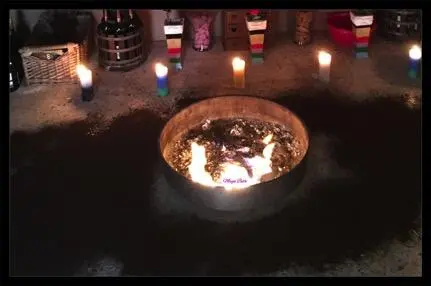
To appear before the Lord and the Lady of Death, the dead had to overcome many obstacles such as: move away from colliding rocks, cross deserts and hills, suffer threats in the form of a crocodile named Xochitonal, winds with sharp obsidian stones, a mighty river difficult to cross and ask for the help of a dog which would be sacrificed the same day of the person’s funeral (Xoloitzcuintli).
Some of these pre-Hispanic beliefs are still latent in Mexican popular culture, such as November 2nd or the Day of the Dead, when they celebrate the day of their deceased ancestors. The idea is to remember the dead with joy, just as they lived in life, and not with the sadness and grief of their death; it is very popular to bring music to funerals to dance and brighten the departure of the dead. Death is seen as a suffering being with a very painful job, which was given a great power but also a great burden that nobody sees.
Mexicans also had other representations of death; such as tzompantli or “skull rack”, rows of wooden poles used to display human skulls, as in the abacuses. These “skull racks” were found in the great temples of Ancient Mexico and were considered an important part of the cult of death. Death could also be represented by skull figures carved in stone, in clay, or skulls beautifully painted. Human skulls decorated with flints and shells instead of eyes have also been found. The experts have not agreed on the meaning of these skulls, but they assume they were some sort of offering to the lords of death. Traces of stark death, ornso be it’s of the Goddess Coatlicue, offerings in ritual incense burners, and figures of all types and sizes have also been found.
This indicates that there was a very strong cult towards death among the ancient Mexicans, and also among the Mayans, the Tarascans and the Totonacs, who also had a great devotion to death.
Then, the Spanish arrived and it was thought that the cult to death would be forgotten, but that was not the case: Mictlantecuhtli and Mictecacihuatl (mainly the latter) remained hidden and many of their devotees continued following them.
In his study on the Holy Death, the archaeologist Carlos Navarrete suggests that the popular devotion could be due to the syncretism between a Christian deity related to death and Saint Pascual Baylon, a Catholic saint and the Animas Solas (Lonely Souls).
The Spanish Conquest was imposed by “blood and fire” on the indigenous people of Mexico, but there were also another conquest: the spiritual one, which was the total destruction of the divinities that made up the indigenous culture. However, despite all their efforts, some traces of the ancient religion still remained within Catholicism and the cult to the Holy Death is part of that distant past.
The conversion of the indigenous peoples was paramount for the Franciscan missionaries, and the resistance of the natives towards the new religious doctrines was a permanent condemnation for evangelisers. The malpractice of some indigenous people was denounced in a text written in c. 1600 which mainly described the idolatries in the small village of Tuxtla.
The only true God for Catholics was the one that was established in the Bible. Therefore, when they found another religious thought, they condemned it as if it was a satanic rite: but this was unfair since in Ancient Mexico the concept of hell was not known. The indigenous gods were venerated in pyramids, in hills and in caves, and during the first years of evangelisation the Catholic missionaries did not understand why people used to dance around bones (which had often belonged to high priests or leaders, and that was why they worshipped them). These were only some of the religious practices of the time, which were beyond the comprehension of the minds of conquerors and evangelisers.
To try to hide these practices, the faithful devotees of Mictlancihuatl most probably “dressed” the cult of this goddess with elements of Catholicism to avoid being punished. The mixture of both roots -Indigenous and European- and the addition of Creole elements gave rise to the cult of the Holy Death, as we know it today.
The current and contemporary cult of the Santísima Muerte (Most Holy Death) appeared in Hidalgo around 1965. And it is rooted in the states of Mexico, Guerrero, Veracruz, Tamaulipas, Campeche, Morelos and Distrito Federal (in the “barrio de Tepito” the cult is commonly used among criminals and merchants), Nuevo Leon, Chihuahua, Quintana Roo, Oaxaca, Tijuana and Guanajuato. It was integrated with the cult to Tonantzin (female deity for the natives and later syncretised in the Virgin of Guadalupe) and that of the Virgin Mary.
The Holy Death is a spiritual entity, an image, a soul that helps and protects anyone who comes to her to ask for favours. She does not work under any kind of magic, neither white nor black. It has sometimes been said that the Holy Death is sinister, painful, cruel and cold, but this is not the case.
Devotees to the Holy Death report that among other favours, she can grant miracles to those who venerate her. Her worship has also been associated with criminals, prostitutes and drug dealers. People living in modern cities and villages also invoke her protection. However, people who live in situations of high risk are usually the ones who venerate her the most, wearing medals or images of the Holy Death or even a tattoo in their skin. Her image can be found mainly in soldiers, policemen, drug dealers, criminals and prostitutes. The Most Holy Death is a symbol that represents people living between the legal and the illegal, but her cult can also be found in the highest strata of society.
Читать дальшеИнтервал:
Закладка:

